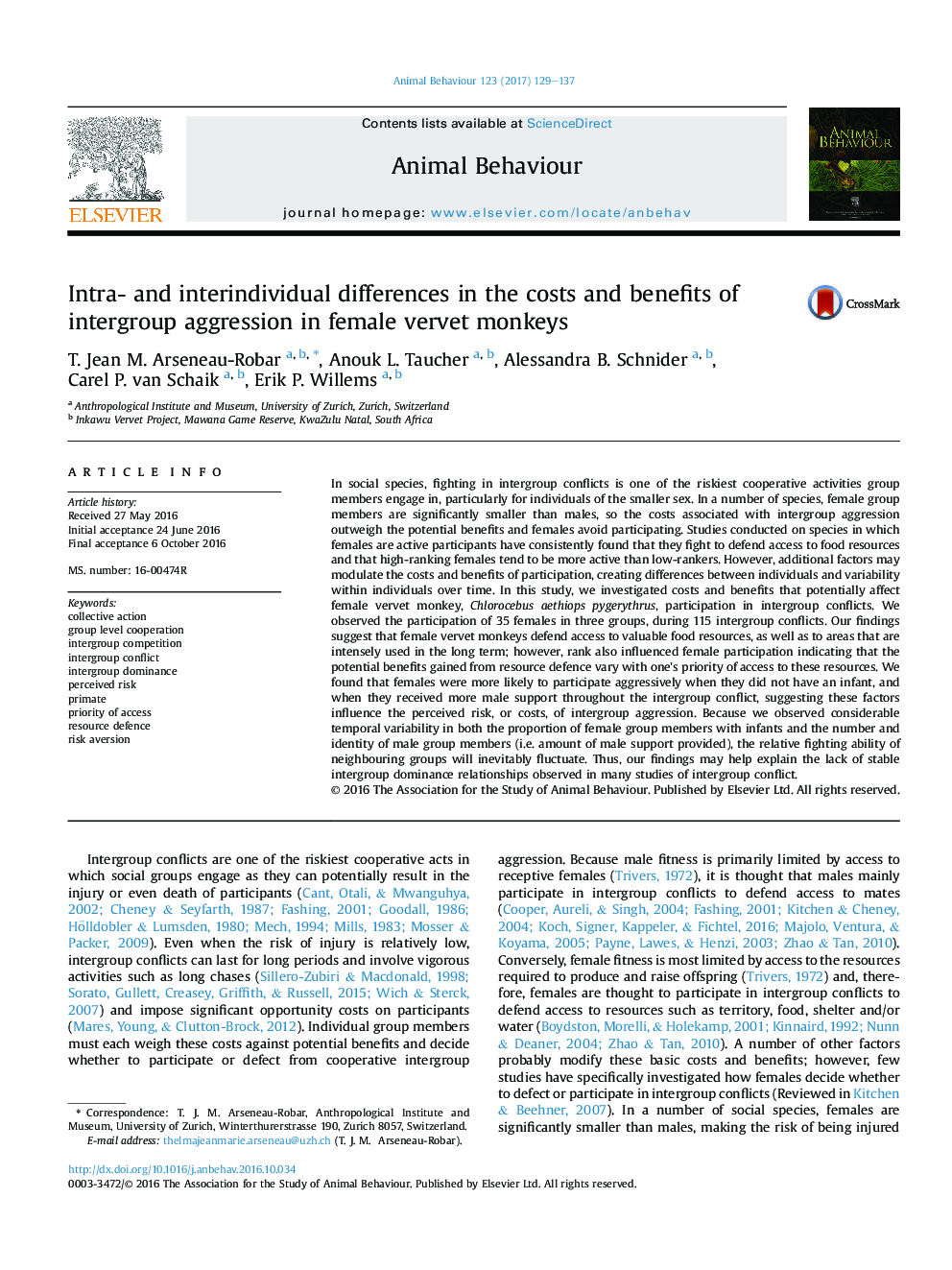| کد مقاله | کد نشریه | سال انتشار | مقاله انگلیسی | نسخه تمام متن |
|---|---|---|---|---|
| 5538577 | 1552205 | 2017 | 9 صفحه PDF | دانلود رایگان |
عنوان انگلیسی مقاله ISI
Intra- and interindividual differences in the costs and benefits of intergroup aggression in female vervet monkeys
ترجمه فارسی عنوان
تفاوت های درونی و بین فردی در هزینه ها و مزایای تهاجم میان گروهی در میوه های زن وروت
دانلود مقاله + سفارش ترجمه
دانلود مقاله ISI انگلیسی
رایگان برای ایرانیان
کلمات کلیدی
اقدام جمعی، همکاری گروهی، رقابت گروهی تعارض میان گروهی، سلطه میان گروهی، ریسک در نظر گرفته شده، پرایمکت، اولویت دسترسی، دفاع منابع خطر گریزی،
موضوعات مرتبط
علوم زیستی و بیوفناوری
علوم کشاورزی و بیولوژیک
علوم دامی و جانورشناسی
چکیده انگلیسی
In social species, fighting in intergroup conflicts is one of the riskiest cooperative activities group members engage in, particularly for individuals of the smaller sex. In a number of species, female group members are significantly smaller than males, so the costs associated with intergroup aggression outweigh the potential benefits and females avoid participating. Studies conducted on species in which females are active participants have consistently found that they fight to defend access to food resources and that high-ranking females tend to be more active than low-rankers. However, additional factors may modulate the costs and benefits of participation, creating differences between individuals and variability within individuals over time. In this study, we investigated costs and benefits that potentially affect female vervet monkey, Chlorocebus aethiops pygerythrus, participation in intergroup conflicts. We observed the participation of 35 females in three groups, during 115 intergroup conflicts. Our findings suggest that female vervet monkeys defend access to valuable food resources, as well as to areas that are intensely used in the long term; however, rank also influenced female participation indicating that the potential benefits gained from resource defence vary with one's priority of access to these resources. We found that females were more likely to participate aggressively when they did not have an infant, and when they received more male support throughout the intergroup conflict, suggesting these factors influence the perceived risk, or costs, of intergroup aggression. Because we observed considerable temporal variability in both the proportion of female group members with infants and the number and identity of male group members (i.e. amount of male support provided), the relative fighting ability of neighbouring groups will inevitably fluctuate. Thus, our findings may help explain the lack of stable intergroup dominance relationships observed in many studies of intergroup conflict.
ناشر
Database: Elsevier - ScienceDirect (ساینس دایرکت)
Journal: Animal Behaviour - Volume 123, January 2017, Pages 129-137
Journal: Animal Behaviour - Volume 123, January 2017, Pages 129-137
نویسندگان
T. Jean M. Arseneau-Robar, Anouk L. Taucher, Alessandra B. Schnider, Carel P. van Schaik, Erik P. Willems,
